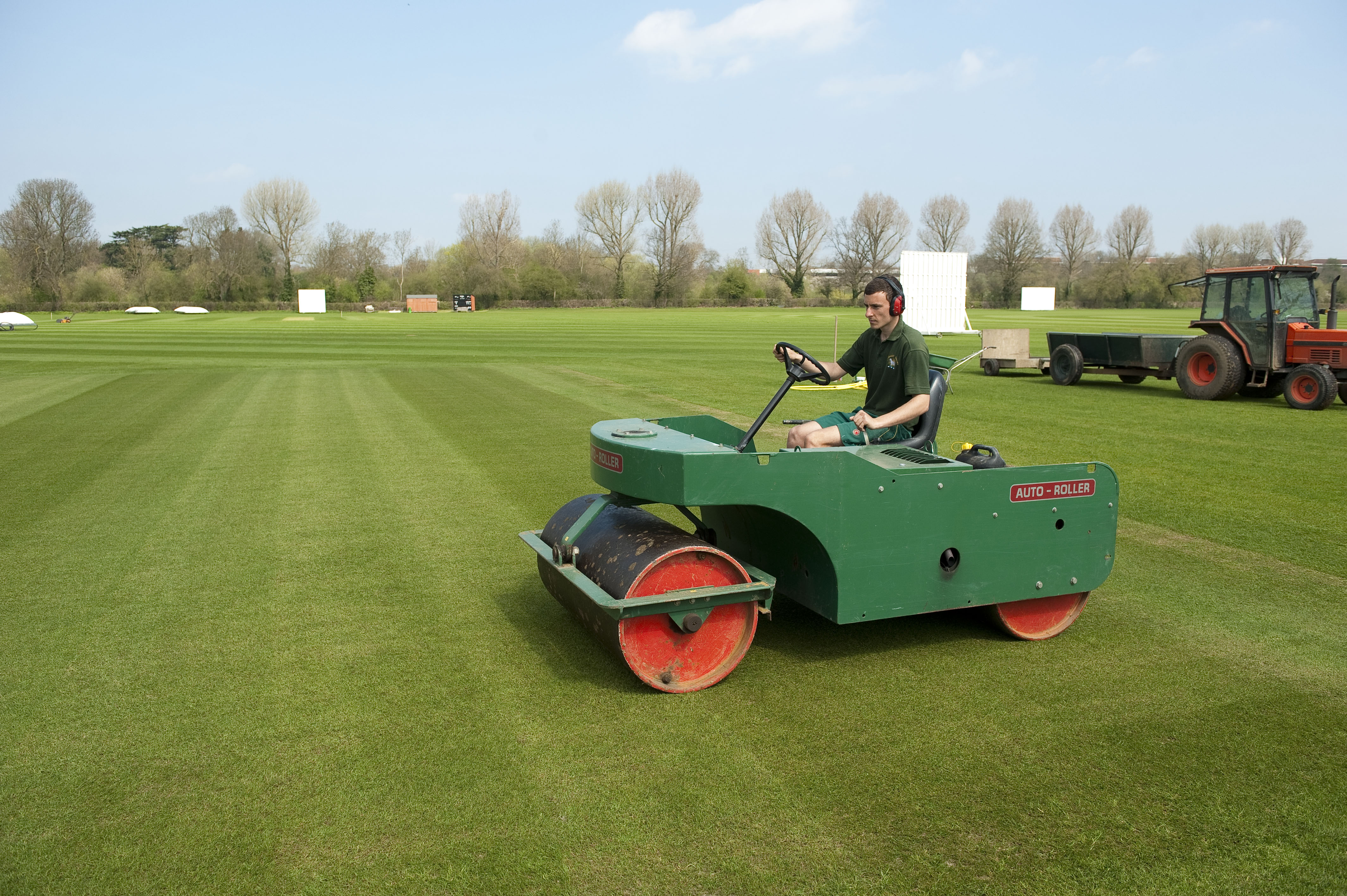Pre-season rolling on the cricket square is helpful to the production of quality pitches, as the cricket square requires a firm, even surface. Rolling should commence as soon as conditions permit, aiming to use successively heavier rollers as the soil dries to compact the soil over a period of several weeks.
The groundsperson is the only person who can decide when conditions are suitable for rolling. The roller should never mark or deform the soil in any noticeable way, or discolour the grass, so it is important that the soil is not too moist for the weight of the roller. If the roller is marking the soil then wait for it to dry sufficiently and try again. Rolling when the soil is too wet will not be effective to depth and mean that there is too much forward movement in the soil and can damage the grass.
Use a light roller at the earliest opportunity in the spring, possibly at the end of February or the beginning of March, but gradually increase the weight, if possible, and finish off with the heavy roller.
It is essential that conditions are suitable to take the weight of the roller without marking the surface. If you can see marking then there will too much forward movement in the soil. During pre-season rolling, the pitch should be rolled in all directions so that it may offer the best chance of evenly compacting the surface and to smooth out any minor surface undulations. A good description for this is to roll in a ‘union jack’ pattern. Once the season has begun, it is often difficult to roll in any other direction than with the line of play, so pre-season is the only chance to do this. The aim is to re-consolidate the square to a depth of around 75-100mm (3-4 inches) in time for the start of the season.
To watch the video for pre-season rolling - Click here


 Tweet
Tweet